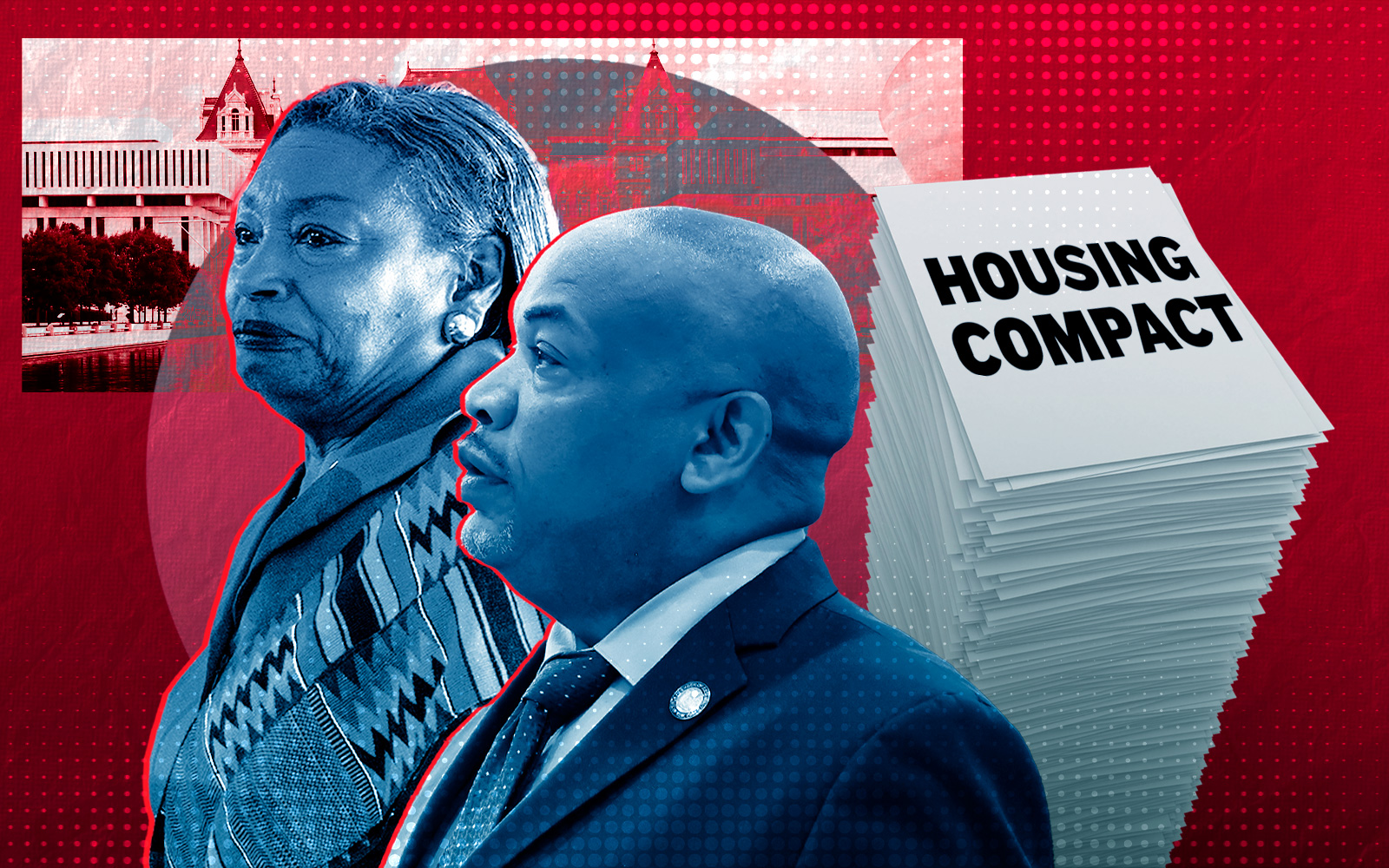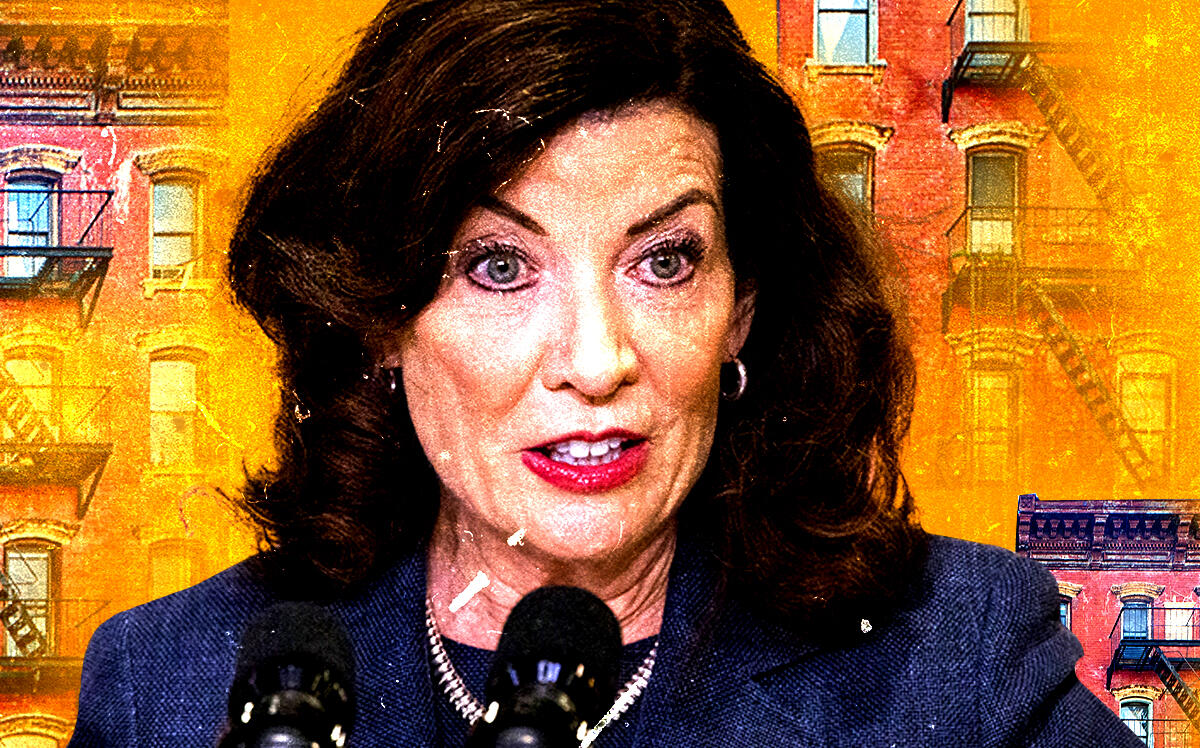First, Gov. Kathy Hochul’s housing mandates bit the dust. Now, the rest of her housing agenda appears to be on life support, if not dead.
An extension for projects seeking the crucial property tax break 421a is not expected to be included in the state budget, according to sources with knowledge of the negotiations between the governor and legislature. Neither are changes that would allow more conversions of offices into apartments, or to raise the residential floor area ratio cap in New York City.
Hochul had pushed to wrap all of those measures into the budget bill — a recognition that passing them later in the legislative session would be even harder. But now the budget is nearly three weeks late, and consensus among legislators on her plan to add 800,000 homes statewide over the next decade has been elusive.
Proposals from progressive groups for state-based housing vouchers and good cause eviction also appear to have been set aside as Hochul, Assembly and Senate leaders struggle to finish an annual spending plan, sources said.
Many of these proposals were contentious from the outset, and the legislature either left them out of their one-house budget bills or pitched alternatives.
Some lawmakers are now posing an ultimatum: Either include good cause eviction and a state-based voucher program in the budget, or leave all housing items out. At least 21 members in each chamber have vowed that they will not accept a housing deal without those measures, according to City & State.
Hochul has not supported them, however. The Senate and Assembly alluded to supporting good cause eviction in their own spending resolutions, but did not actually include it. They also excluded most of the governor’s housing proposals, instead pitching incentive-driven housing growth targets and voucher programs.
Housing has emerged as a main sticking point in budget talks. On Tuesday, the governor acknowledged that she and the legislature had reached an impasse on her New York Housing Compact, which set three-year housing targets for upstate and downstate localities. She said she was still pushing for other measures that would help grow the state’s housing stock.
But by late Wednesday, those other policies also seemed to be on the cutting-room floor, according to sources.
Hochul had proposed an extension to the 2026 construction deadline for 421a, which would give developers who managed to qualify for the expired program — by getting foundation footings in the ground by June 15, 2022 — four more years to complete their projects. The Real Estate Board of New York has estimated that without such an extension, some 32,000 planned apartments would not be built.
A representative for Hochul would not comment on Thursday, but pointed to a statement the governor issued Tuesday that she would “continue to discuss other elements” of her housing plan and “policy changes that will increase supply and make housing more affordable.”
Lawmakers on Thursday approved another budget extender, which expires Monday. Housing items could yet remerge in negotiations, but no one is betting on that.
State officials estimated that a new 421a-like program would yield fewer than 100,000 homes, but said reaching Hochul’s goal of 800,000 would not happen without it.
Her plan also called for lifting the city’s FAR cap on residential space, which would have permitted the city to rezone areas and allow larger residential buildings if a certain percentage of units were affordable, under its Mandatory Inclusionary Housing program.
Raising the FAR cap also would have eased office-to-residential conversions. Another proposal would have expanded the city’s most flexible conversion rules to include buildings constructed before 1990.
Some opponents of lifting the cap backed an alternative put forward by Manhattan Assembly member Deborah Glick which required that any building that exceeded an FAR of 12 set aside at least 40 percent of the units as affordable.
The Adams administration backed the governor’s FAR plan, as well as a proposal that would allow the city to legalize basement and cellar apartments. Another proposal would have replaced the expired tax break J-51, provided to landlords renovating multifamily properties.
Absent state action, the city’s goal of adding 500,000 new units over the next 10 years appears out of reach. For office conversions, though, the Department of City Planning has a plan B: The agency could extend the rules that govern Lower Manhattan, where buildings constructed between 1961 and 1977 are exempt from the residential density limit, to other parts of the city.
That change, however, would need to go through the long public review process and receive City Council approval.
Read more



